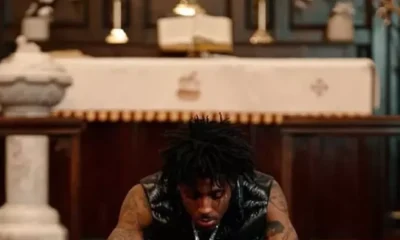Entertainment
Cringe-worthy Moves and a White B-Girl’s Durag Ignite Debate Over Olympic Breaking’s Authenticity

Some feared the subculture being co-opted, commercialized and put through a rigid judging structure when the spirit of breaking has been rooted in local communities.
PARIS, France — Breaking made its highly anticipated Olympic debut at the Paris Games, igniting discussions about whether the essence of this hip-hop art form was truly captured.
Rachael Gunn, known as “b-girl Raygun,” a 36-year-old professor from Sydney, Australia, gained unexpected internet fame for her unconventional moves. Competing against younger and more skilled b-girls, Gunn was eliminated early without earning a single point. Her moves, which include her signature “kangaroo” routine, spurred both fascination and criticism online.
Gunn, with a Ph.D. in cultural studies, embraces creativity over traditional power moves. Despite her efforts, many felt her representation of breaking culture fell flat on the Olympic stage, with one user on X commenting, “It’s almost like they are mocking the genre.”
Lithuania’s silver medalist b-girl Nicka, also drew attention for wearing a durag during her performances. For many Black viewers, this raised issues of cultural appropriation, as durags have deep-rooted significance within Black culture. Actor Kevin Fredericks noted the discomfort with seeing someone who doesn’t need it for protective styling or cultural reasons wearing a durag.
B-girl Nicka credited the pioneers of breaking from the 1970s Bronx for her success and style, showing respect for the origins of the dance. Her journey to the silver medal culminated in a final match against Japan’s b-girl Ami.
The Olympics’ inclusion of breaking brought challenges. Organizers aimed to present breaking to a global audience while preserving its roots. The dance, born in the Bronx within Black and brown communities, was originally a form of youth expression and empowerment amidst socio-economic hardships.
Refugee b-girl Manizha Talash (“b-girl Talash”) made a bold statement by wearing a “Free Afghan Women” cape during her pre-qualification battle, highlighting the personal and political underpinnings of the dance. However, she was disqualified for violating Olympic regulations on political statements.
The American representatives, b-girls Logistx and Sunny, both strong competitors, were eliminated in the round-robin phase, missing the quarterfinals. They expressed concerns about the direction competitive breaking is taking under Olympic influence. “Breaking changes over time. Maybe I’m just old-school and I don’t want to change,” said Sunny.
Before the battles commenced, Snoop Dogg made a memorable entrance, energizing the audience. He expressed confidence in breaking’s ability to represent hip-hop culture. Rapper ICE T echoed similar sentiments, highlighting the competition’s significance in showcasing breaking to new audiences.
The male breakers will take the stage next, providing another opportunity for breaking to align Olympic presentation with its cultural roots.


















